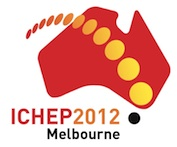Speaker
Prof.
Chun-Khiang Chua
(Chung Yuan Christian University (TW))
Description
We study the implications of the experimental results on the mu to e gamma decay rate and the muon anomalous magnetic moment on muonic lepton flavor violating processes, such as mu to 3 e and mu N to e N. We use a model independent approach in this analysis, where these processes are considered to be loop induced by exchanging spin 1/2 and spin 0 particles. We explore two complementary cases, which has no or has internal (built-in) cancellation mechanism in amplitudes.
Our main results are as following.
(a) Bounds from rates are used to constrain parameters, such as coupling constants and masses. These constraints can be easily updated by simple scalings, if the experimental situations change.
(b) The muon g-2 data favors non-chiral interactions.
(c) In mu to 3 e and mu N to e N processes, Z-penguin diagrams may play some role, while box diagrams contributions are highly constrained.
(d) In the first case (without any built-in cancellation mechanism), using the recent mu to e gamma bound, we find that mu to 3e and mu N to e N rates are bounded below the present experimental limits by two to three orders of magnitudes in general. Furthermore, by comparing Delta a_mu and Br(mu to e gamma) data, the couplings of mu and e are found to be highly hierarchical. Additional suppression mechanism should be called for.
(e) In the second case (with a built-in cancellation mechanism), the mu to 3 e rate remains suppressed, but the bounds on mu N to e N rates, implicated from the mu to e gamma bound, can be relaxed significantly and can be just below the present experimental bounds.
Primary author
Prof.
Chun-Khiang Chua
(Chung Yuan Christian University (TW))
